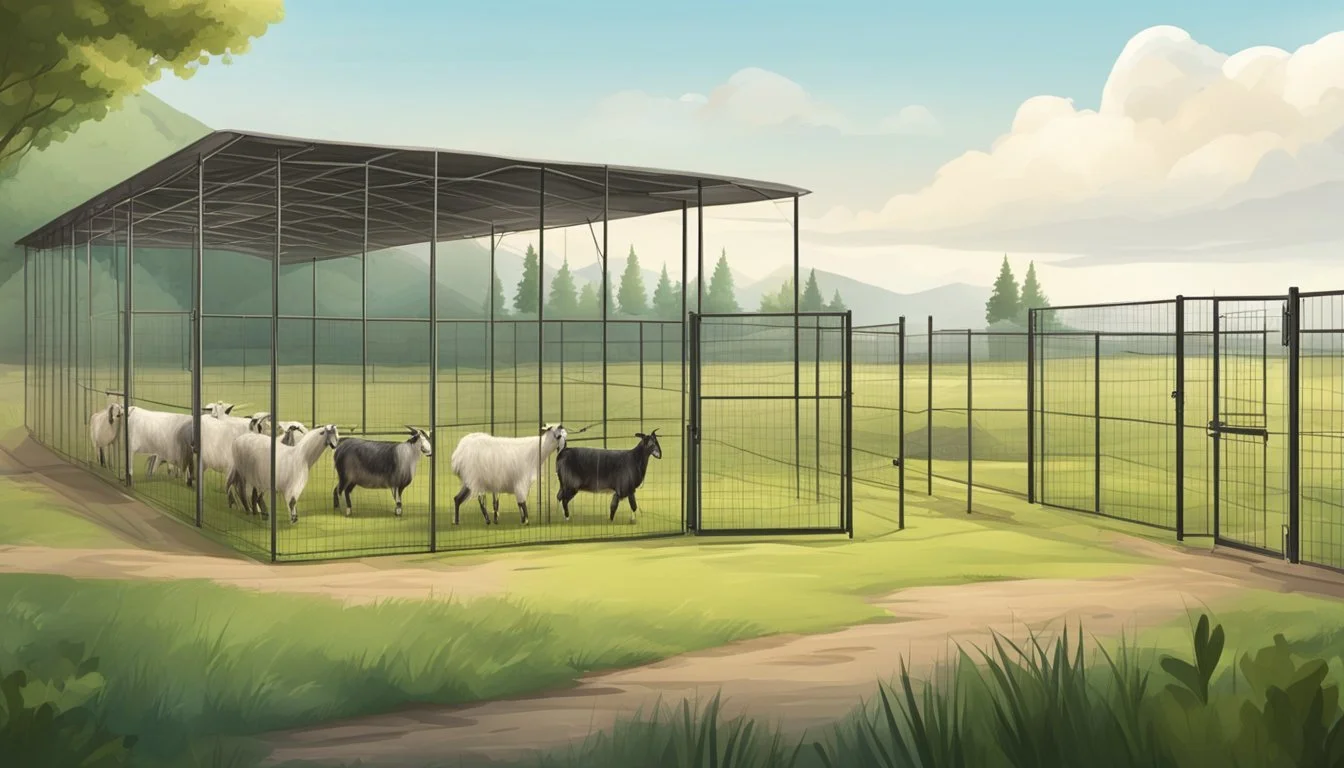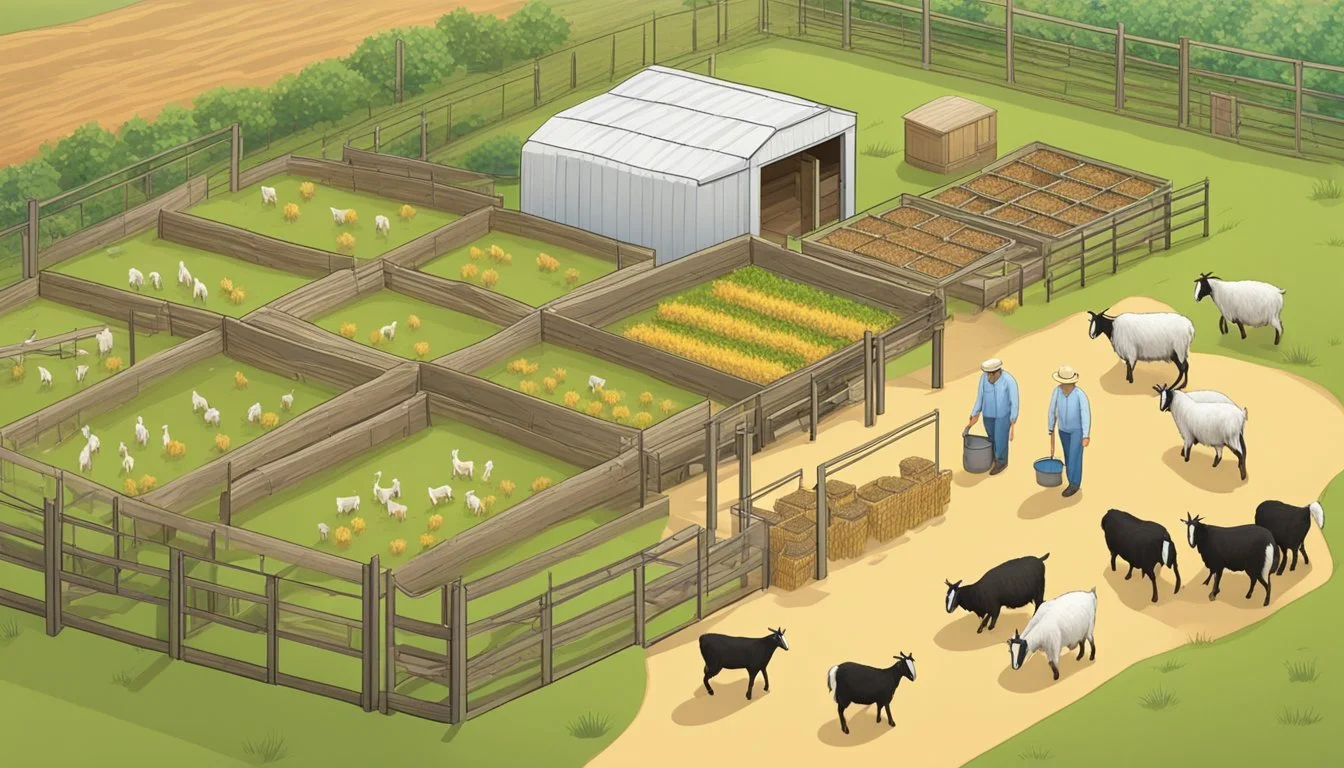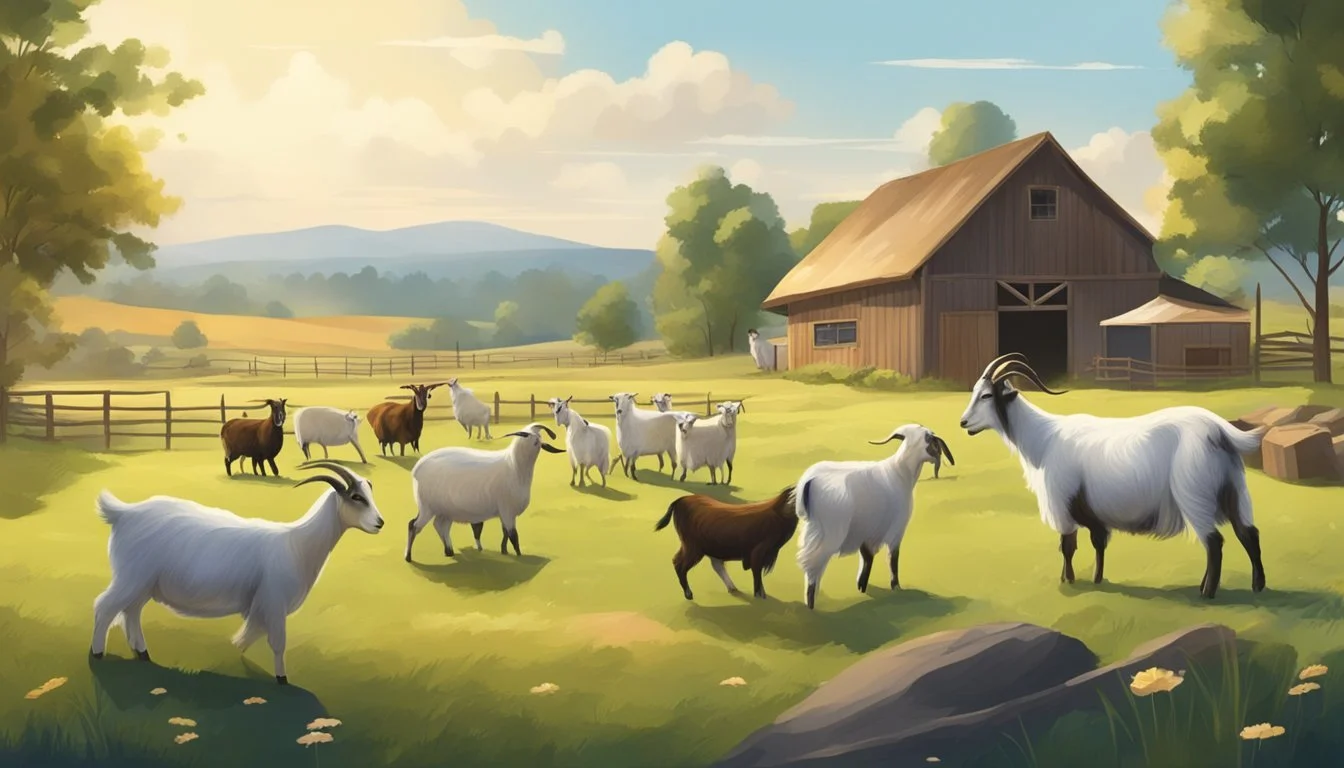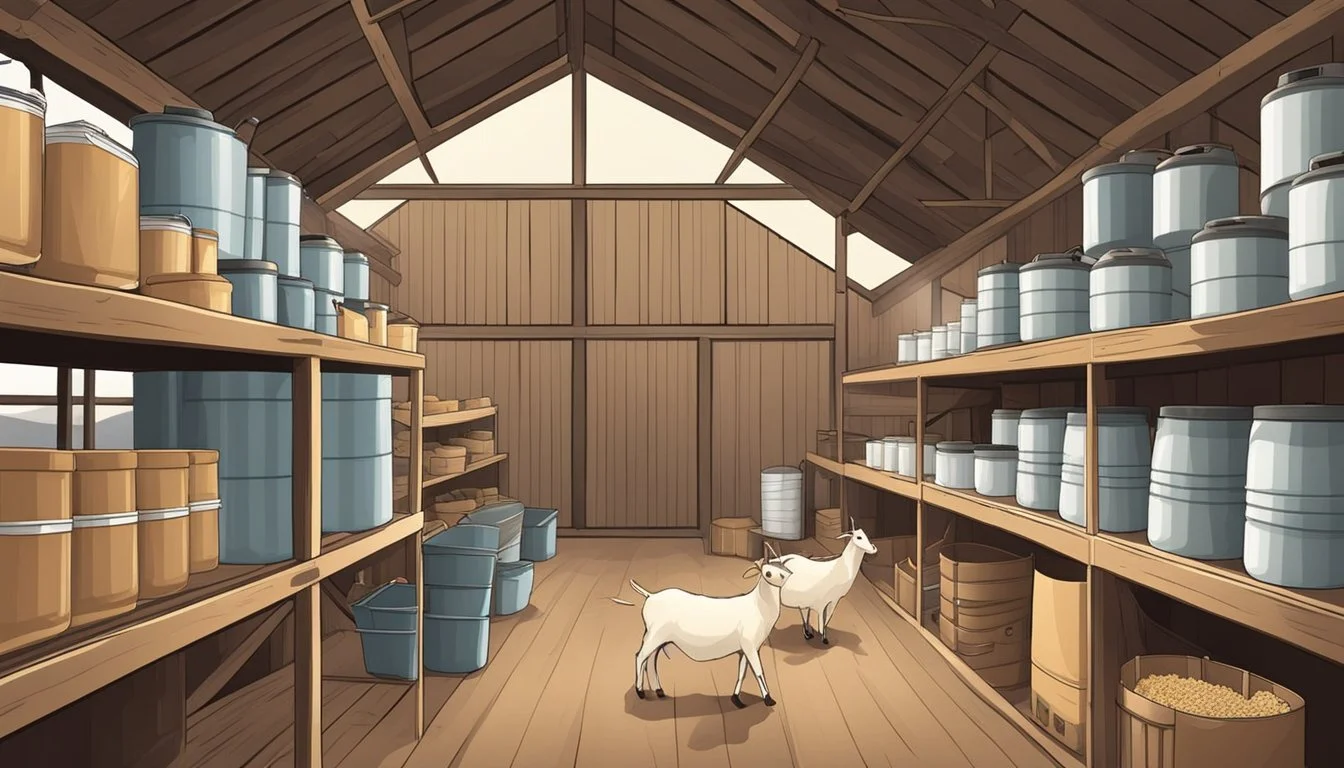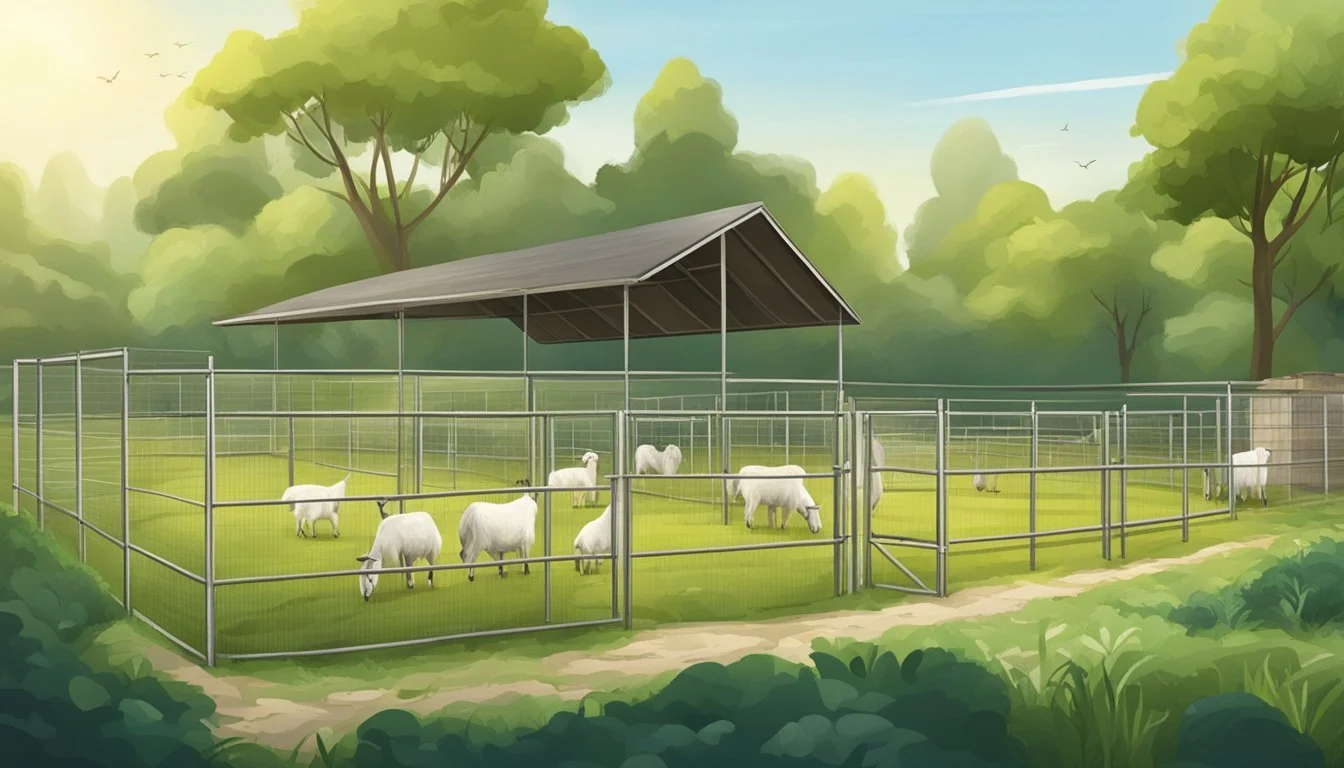How Much Space Do I Need to Raise Goats
Essential Land Requirements
Raising goats is an endeavor that can add value to a farm, provide enjoyment for a homestead, or even offer an agricultural angle to a larger backyard setting. Determining the proper amount of space needed to raise goats is a key aspect that requires attention before bringing these animals into one's care. Goats, known for their versatility and relatively low maintenance, still need adequate space to thrive, both for shelter and for exercise.
The space required for goats varies depending on a number of factors including the breed, the number of goats, and their purpose, whether for milk, meat, fiber, or simply as pets. As a general rule, for the sheltered pen or barn area, each goat needs about 200 square feet of space to allow for free movement and to prevent overcrowding. In addition to shelter, goats require an outdoor area that not only accommodates their social nature but also provides them with the opportunity for exercise and foraging.
While smaller breeds may require less space and larger breeds may require more, all goats need a secure environment that protects them from predators and harsh weather conditions. Proper fencing and an easily accessible water source are also crucial components of a suitable goat habitat. Providing enough room for goats is essential not only for their physical health but also for their mental well-being, as goats are social creatures that thrive on interaction and activity.
Understanding Goat Behavior and Space Requirements
Goats are inherently social herd animals that require adequate space for both their physical and psychological well-being. Designing a habitat well suited to their needs is crucial to keeping goats healthy and happy.
Social Structure and Companionship
Goats thrive on interaction with other goats. As herd animals, they form complex social structures and are calmer and more content when they have companions. Experts recommend a minimum of space for each goat, such as about 20 sq. ft. of indoor space, to allow for comfortable movement and rest. Herd dynamics should not be underestimated, and providing sufficient room for social interactions is just as important as the physical dimensions of their living space.
Exercise and Play
Goats are active creatures that benefit greatly from exercise and play opportunities. A productive exercise area, typically ranging between 25-50 sq. ft. per goat, encourages natural behaviors such as climbing, running, and jumping. These facilities help promote physical health, reduce stress, and encourage a stimulating environment for goats. Ensuring they have access to structures such as ramps or rocks to climb on can enhance their play time and simulate a more natural habitat.
Properly understanding and accommodating for goats' social and physical requirements is crucial in space planning. A well-structured environment supports their need for companionship, exercise, and play, and is essential for maintaining a thriving goat herd.
Determining the Ideal Land Size
When considering space for raising goats, one must account for both the individual space each goat requires for healthy living and the total area necessary to sustain a herd. This calculation involves understanding space per goat as well as the total land needed based on herd size and land productivity.
Space Per Goat
Each goat needs approximately 20 square feet of indoor space for shelter and comfort. Outdoor grazing areas demand significantly more space: standard rules suggest about half to a full acre can comfortably support roughly 6-8 goats. This ensures they have enough room for grazing, roaming, and exercising, which are critical for their well-being.
Total Land Needed for Raising Goats
To calculate the total land needed, one should consider not only the number of goats but also the quality of the pasture. If supplemental feed is provided, more goats can be sustained per acre. For instance, one acre tends to support 6-8 goats, suggesting that two acres would be suitable for 12 to 16 goats as long as the land yields enough food for grazing throughout the year. It is also essential to factor in room for necessary structures such as shelter and feeding stations.
Essential Space Estimates:
Shelter: 20 sq. ft. per goat (indoors)
Grazing: 1 acre for 6-8 goats (outdoors)
It is crucial to avoid overstocking as it can lead to poor pasture conditions and negatively impact the goats' health.
Providing Proper Shelter
When raising goats, ensuring they have a suitable shelter that can protect them from various weather conditions is crucial. Adequate housing contributes to their well-being and productivity.
Weather Considerations
Climate greatly influences the type of shelter needed for goats. In areas with extreme cold, shelters must provide warmth and protection from snow and icy winds. This might include insulating materials and windbreaks. Conversely, in hot climates, shelters need proper ventilation to prevent overheating and reduce the risk of heat stress. A shelter should also keep goats dry during wet seasons, while providing shade during the dry and sunny months.
Types of Housing
The primary housing options for goats include barns or open shelters. A barn offers full coverage and is ideal for areas with harsh weather. It should have at least 20 square feet of space per goat to ensure comfort. Open shelters or three-sided structures provide flexibility and ventilation, suitable for milder climates. In terms of flooring, materials should be easy to clean and maintain to promote a healthy environment for the goats.
Barn: Enclosed, controlled environment, best for cold or extreme conditions.
Open Shelter: Three-sided, allows for natural behavior and ventilation, suited for mild conditions.
Each type of housing should be sturdy and safe, protecting the herd from predators and extreme weather conditions.
Setting Up the Feeding System
Proper nutrition is essential for the health and productivity of goats. A well-planned feeding system ensures goats receive the necessary nutrients for growth, reproduction, and lactation.
Feed and Nutrition
Goats require a balanced diet comprising carbohydrates, proteins, fats, vitamins, minerals, and water. Their nutritional needs vary based on age, weight, and physiological state. A goat's diet primarily includes feed, hay, and forage. Commercial feeds are formulated to meet these nutritional requirements, often including grains like corn, barley, and oats. Adding alfalfa pellets or meal can enhance protein intake.
Hay and Forage
Hay serves as the cornerstone of a goat's diet, especially when fresh forage is unavailable. It provides essential fiber aiding in digestion. Quality hay, such as alfalfa or clover, is rich in nutrients and can be offered free choice or at specific times of the day. Browse also forms an integral part of a goat's diet; they thrive on shrubs, woody plants, and weeds that provide varied nutrition.
Feeding Equipment
Hay feeders should minimize waste, keeping hay clean and accessible.
Ensure water troughs or buckets are clean and filled with fresh water at all times.
Grain feeders or troughs should allow all goats to feed simultaneously to avoid competition. Measure grain to maintain appropriate body condition and prevent overfeeding.
Implementing a reliable feeding system involves providing balanced feed, ensuring a steady supply of hay and forage, and using efficient feeding equipment. These practices contribute to the overall well-being of the goat herd.
Creating a Healthy Pasture
To raise goats effectively, a healthy pasture is crucial, offering both nutrition and a conducive environment for browsing and foraging. The land must be well-maintained, and measures should be taken to manage parasites that may affect the herd's well-being.
Grazing Area Maintenance
Regular Monitoring: It is imperative to inspect the pasture regularly, checking for and removing any harmful plants or debris that could injure or be toxic to goats.
Vegetation Management: A mix of grasses, shrubs, and broadleaf plants makes for ideal goat forage. It should be noted that goats prefer browsing over grazing and will select vegetation accordingly. Overgrazing can lead to soil erosion and reduced pasture quality, so it’s essential to manage the stocking rate to ensure longevity of the grazing area.
Managing Parasites
Pasture Rotation: Goats require rotation to fresh sections of the pasture to help break the life cycle of common parasites, which often thrive in the ground where animals graze frequently.
Appropriate Treatment: Regular testing and, if necessary, treatment for parasites should be conducted. A clean, dry environment is essential as damp conditions can increase the risk of parasite proliferation, and rain can facilitate the spread of parasites in the pasture.
By adhering to these management practices, they can create and maintain a pasture that sustains and benefits their goat herd.
Health and Wellness of the Goats
Maintaining the health and wellness of goats requires diligent care and management. Ensuring they have access to clean fresh water and essential minerals plays a crucial role in their overall well-being.
Routine Health Checks
Regular health checks are vital to detect and address any issues early. Goats should be examined for signs of distress, illness, or injury. Their body condition should be assessed, and hooves trimmed to prevent overgrowth and subsequent problems. Periodic parasite control measures should also be implemented to keep the animals disease-free.
Nutritional Supplements
Goats benefit from a balanced diet enriched with necessary nutritional supplements. Minerals are a cornerstone of their nutrition; providing a free-choice mineral mix can satisfy their needs. Additionally, some farmers offer baking soda to help with digestion and prevent bloating. It's important to ensure that these supplements are specifically formulated for goats to prevent toxicity and imbalances.
Breeding and Caring for Kids
Successful goat breeding and kid rearing are critical for a thriving herd and optimal milk production. One must understand the specifics of breeding cycles and ensure proper nursery space for the best care of baby goats.
Breeding Cycles
Goat breeding typically follows a seasonal pattern, with most breeds experiencing a rutting period in the fall. To maximize successful breeding, one must recognize the signs of does in heat, which can occur every 18-24 days during the breeding season. After successful breeding, gestation lasts approximately 150 days. Dairy goats, specifically, need to be bred annually to continue their cycle of milk production. Close attention to these cycles is paramount to maintain a productive herd.
Nursery Space
When kids are born, immediate considerations should turn to the nursery space. Newborns require a warm, dry, and draft-free environment to thrive. For the first few weeks, each kid should have about 4-5 square feet of space. As they grow, this allocation needs to increase to accommodate their activity level. It's important to note that proper space contributes to reducing stress, which can affect milk production in dairy goats later in life. Adequate nursery space leads to healthier kids and a more productive mature herd.
Choosing the Right Goat Breed
When one decides to raise goats, selecting the appropriate goat breed is essential to meet specific farming goals. Dairy and meat goats differ in size, purpose, and husbandry requirements, which can influence the amount of space required for optimal health and production.
Dairy vs Meat Goats
Dairy goats require space not just for grazing but also for exercise to maintain their health for optimal milk production. Some popular dairy goat breeds include the larger Alpine and Nubian goats, which are well-regarded for their milk production. On the other hand, Nigerian Dwarf goats are a smaller dairy breed known for high butterfat content milk, which can be a factor in your choice if space is limited.
Meat goats, such as Boer goats, have different space requirements due to their larger size and the need for more foraging area to gain muscle mass. Pygmy goats, despite being small, can also be raised for meat, and their compact size makes them suitable for smaller spaces.
Goat Breed Adaptability
The adaptability of a goat breed to your local environment can affect how much space you will need. Hardy breeds that can forage in rough terrain, such as the Spanish goat, might need more acreage to roam. In contrast, breeds that are not as hardy may require less space but more shelter and care. It's crucial to match the breed to your environment to ensure the goats have adequate space to thrive without overcrowding.
Considering breed characteristics, such as temperament and climatic adaptability, will help ensure that your chosen breed flourishes in the space you have available.
Goat Care Supplies and Storage
Raising goats requires a variety of supplies for their care and well-being. Adequate storage solutions are essential to organize these supplies effectively, ensuring they are accessible and maintained in good condition.
Feeding Supplies
Food Storage: Goats need a consistent supply of nutritious food, which may include hay, grains, and minerals. Owners should store feed in airtight containers to prevent spoilage and protect from pests. The storage area must be dry and cool to preserve the feed's quality.
Feed Bins: Metal or heavy-duty plastic bins with lids.
Hay Storage: A designated dry area for hay bales, preferably off the ground to prevent mold and deterioration.
Feeding Equipment: To facilitate feeding, sturdy feeders that minimize waste are beneficial.
Hay Feeders: Designed to hold hay in place and reduce waste.
Grain Feeders: Can be attached to a wall or fence to provide easy access.
Health and Grooming
Health Supplies Storage: Proper storage of health supplies can prevent accidents and ensure the longevity of the products. It can involve:
Medicine Cabinet: Lockable and temperature controlled for medications.
First Aid Kit: Readily available and fully stocked with bandages, antiseptics, and basic veterinary tools.
Grooming Supplies: Regular grooming keeps goats healthy and comfortable. Essential grooming tools include:
Brushes: Soft brushes for the coat and stiffer brushes to remove mud and dirt.
Clippers: For trimming hair and preventing matting.
Bedding Storage: Clean, dry bedding is crucial for goats’ comfort and health. Owners should store extra bedding materials like straw or wood shavings in a dry, enclosed space to keep them free of pests and mold.
Weeds and Fencing: Weeds can disrupt the feeding area, and adequate fencing is needed to protect goats from predators and escape. Owners must have:
Weed Control Tools: Regularly used to maintain a clean grazing area.
Fencing Supplies: Kept on hand for repairs, including posts and mesh wire that are tall and sturdy enough to secure the perimeter.
By investing in the right supplies and implementing organized storage strategies, goat owners can maintain a healthy and efficient environment for their livestock.
Incorporating Goats into a Mixed Farm
When bringing goats into a mixed farming environment, it is essential for farmers to understand the dynamics between different species and the benefits goats can provide. Goats are known for their versatility and can offer both economic and ecological advantages on a farm.
Goats with Other Livestock
Goats can coexist quite well with other livestock such as cows and chickens. However, it is important that each animal has enough space to avoid stress and potential conflict. For example, goats should have access to their own shelter and feeding areas to ensure proper nutrition and wellbeing. When integrating goats with cattle, farmers benefit from the goats' ability to browse on brush and weeds, which cows are less likely to eat, leading to more efficient land management.
Benefiting from Goats on the Farm
Goats offer numerous advantages to farmers looking to maximize their land's productivity. Their natural tendency to browse makes them excellent at controlling brush and weeds, which can improve pasture land for other livestock. Moreover, the manure produced by goats acts as an effective fertilizer, enriching the soil without the need for chemical alternatives. With proper management, goats can not only fit well within a mixed farm setting but also enhance its overall productivity and sustainability.
Understanding Zoning and Legal Requirements
Before adding goats to your property, it's crucial to be aware of local regulations and land use permits. This ensures your goat raising venture complies with legal standards and prevents potential disputes with neighbors.
Local Regulations on Livestock
Local regulations significantly influence the possibility of raising goats, as they dictate what is permissible within different neighborhoods and zones. For instance, some regulations may limit the number of animals based on property size or classify goats as pets or livestock, impacting your legal ability to raise them. Homeowners must check with their city or county’s planning department to understand these specific regulations.
Building and Land Use Permits
Beyond the broad legal framework, raising goats often requires specific building and land use permits for structures such as housing or shelter. These structures must align with:
Fencing requirements: Ensuring goats are safely enclosed and unable to escape into the neighborhood.
Shelter standards: Adequate housing must be provided, protecting goats from the elements.
Permits ensure the backyard facilities meet size, design, and location criteria set by local authorities. Homeowners should obtain these before constructing enclosures or altering their land to create a space suitable for goats.
Practical Considerations for Small Scale Goat Farming
In small-scale goat farming, efficient use of space and land resources determines the success of the endeavor. Adherence to minimum space requirements and innovative land use are pivotal for the wellbeing of the goats and the sustainability of the farm.
Space Management in a Small Farm
Space management begins with understanding the minimum requirements for each goat. A doe generally needs about 16 square feet of barn space for resting, with an additional 25-50 square feet for an activity area. Bucks, due to their larger size and more vigorous behavior, often require more space. On a small farm, it's crucial to allocate areas that allow goats to feed, rest, and play without overcrowding. Providing each goat with approximately 16 inches of feeder space helps to minimize competition and stress during feeding times, promoting better health and productivity.
Maximizing Small Land Parcels
Effective design and use of fencing can help maximize a small land parcel. Rotational grazing not only supports soil health but also maximizes the usable space for the goats to forage naturally. Fencing can be arranged to create separate paddocks, which can be used in rotation to prevent overgrazing and to allow regrowth of pasture. Smaller breeds, typical of backyard and homestead settings, can thrive in less space if managed properly. Structures like raised platforms and sheltered pens within the land parcel can provide goats with exercise and lounging areas, further enhancing a lean farming operation by using vertical space.
Preparing for the Seasons
Raising goats requires one to be perceptive of the different challenges and needs that arise with each season. Key considerations include protecting against extreme weather and ensuring that the goats have access to appropriate shelter and seasonal nutrition.
Adapting to Seasonal Changes
Goats are hardy animals, but they are affected by seasonal changes. In spring, the rise in temperature and increase in rain may lead to muddy conditions that can affect the health of the goats' hooves. Precautionary measures should be taken to avoid hoof rot, which is a common ailment during this wet season.
During summer, providing adequate shade and ventilation is crucial to prevent heat stress. Goats require structures that allow for air circulation while blocking out harsh sunlight. Summer is also a time for parasites, so herd owners should be vigilant in their control measures.
Seasonal Shelter and Feeding
Shelter during winter must shield goats from snow, moist drafts, and freezing temperatures. A three-sided structure is often sufficient, but it should be adapted to block cold winds and insulated if temperatures are exceptionally low. Goats should also have dry bedding to rest on, which requires regular maintenance.
When it comes to feeding, goats need a diet that compensates for the nutritional gaps caused by seasonal pasture fluctuations. In winter, high-quality hay and possibly supplemental grains become necessary to maintain health and body condition.
Season: Spring
Shelter Needs: Dry, well-drained flooring
Feeding Adjustments: Fresh pasture, hoof care focus
Season: Summer
Shelter Needs: Shade, ventilation
Feeding Adjustments: Parasite control, water access
Season: Winter
Shelter Needs: Insulation, wind protection
Feeding Adjustments: High-quality hay, grain supplementation
Beyond the Basics for Experienced Goat Farmers
Experienced goat farmers understand that raising goats involves more than just providing shelter and basic nutrition. Advanced practices can enhance goat welfare and optimize production for dairy and fiber goats.
Advanced Feeding Techniques
Improving goat nutrition is essential for the health and productivity of the herd. Total Mixed Rations (TMR) allow farmers to accurately meet nutritional requirements, tailoring diets based on the balance of carbohydrates, proteins, lipids, vitamins, and minerals. Browse-based diets, which include shrubs and woody plants, mimic the natural feeding habits of goats and can improve their gut health. Additionally, incorporating forage rotation helps to maintain a parasite-free environment and provides a variety of nutrients, which is particularly beneficial for dairy goats to enhance the quality and volume of milk production.
Improving Milk and Fiber Production
For dairy goats, optimizing milk yield involves a careful blend of nutrition, genetics, and herd management. It's crucial for farmers to provide a diet that supports lactation, paired with attentive care and selective breeding. For improved fiber production, factors such as genetics, shearing frequency, and stress management play crucial roles. Techniques such as keeping detailed production records and implementing regular health checks can ensure that milk and fiber yield remain at their peak. Incorporating enrichment activities, such as structural playgrounds, can enhance goats' physical health, which can indirectly benefit both milk and fiber quality.
Successful goat farming at an advanced level demands a dedication to learning and applying resourceful techniques to maximize the productivity and health of the herd.
Building a Community and Learning Resources
One key to successful goat farming is leveraging the collective knowledge and experience of others. Connecting with support networks and utilizing online resources can greatly enhance a farmer's goat-raising journey.
Support Networks for Goat Owners
Farmers can significantly benefit from joining local or national goat farming groups. These support networks provide opportunities to share insights about best practices in goat care, including health management and farm infrastructure. For instance, networks can guide on the minimum space requirements for goats, which, as noted by Backyard Goats, tend to be around 16 sq. ft. per doe for resting in the barn plus an appropriate amount of activity area. Moreover, support networks often have seasoned farmers who can mentor newcomers through challenges – akin to having a personal guide in raising chickens or dogs, animals with different requirements than goats.
Accessing Online Resources
The internet is a vast repository of information, with countless online resources dedicated to goat farming. They provide educational content like articles, webinars, and interactive forums. Farmers can also find affiliate links on these platforms, leading them to recommended products or services. While these links may offer a commission to the resource provider, they often represent tools and supplies vetted by the community. It is essential for farmers to scrutinize these resources and select what aligns with their specific goat-raising needs and goals. For in-depth knowledge, websites like The Freerange Life detail space requirements for goats which can greatly aid in planning the layout of a farm.

